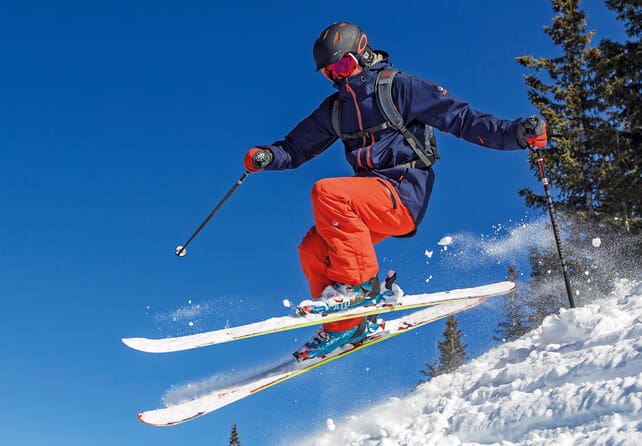When hitting the slopes for an exhilarating day of skiing or snowboarding, staying warm and comfortable is paramount. While the outer layers, like snow and ski pants, provide essential protection against the elements, what you wear underneath can significantly impact your overall comfort and performance. Layering appropriately can make the difference between an enjoyable day on the mountain and feeling cold and restricted. This article will guide you through dressing under ski and snow pants to ensure maximum slope comfort and success.
Table of Contents
Start with a Moisture-Wicking Base Layer:
The base layer is your first line of defence against moisture and sweat. Opt for a moisture-wicking material such as merino wool or synthetic blends, which effectively draw sweat away from your skin, ensuring you stay dry and comfortable. Avoid cotton as it retains moisture, making you feel cold and damp throughout the day.
Add an Insulating Middle Layer:
The middle layer provides insulation to keep you warm in chilly conditions. Opt for lightweight and breathable materials like fleece or down. This layer should offer warmth without adding bulk or restricting movement. Ensure your middle layer can easily fit under your snow and ski pants without causing discomfort.
Choose the Right Snow and Ski Pants:
Your choice of snow and ski pants is crucial. Look for waterproof and breathable pants to keep snow and moisture out while allowing sweat to escape. Ensure they have proper insulation or accommodate the layers you wear underneath. Adjustable waistbands and suspenders can help achieve a secure fit that doesn’t restrict movement.
Opt for Functional Socks:
Wearing the appropriate socks is crucial for ensuring comfort and warmth. Choose moisture-wicking and cushioned socks that provide insulation without tightening your boots. Avoid multiple pairs of socks, which can restrict blood circulation and lead to cold feet. Well-fitting and quality ski socks are your best bet.
Prioritise Mobility:
Your clothing layers should allow for unrestricted movement. Avoid bulky or tight-fitting layers hindering your ability to bend, twist, and carve down the slopes. Look for clothing with stretchable materials or ergonomic designs that complement your body’s movements.
Mind Your Accessories:
Accessories can have a substantial impact on your overall comfort. A quality neck gaiter or balaclava can protect your face from the cold wind, while gloves or mittens with proper insulation keep your hands warm. Ensure your headwear fits under your helmet comfortably and covers your ears adequately.
Consider Ventilation:
While staying warm is crucial, you might be overheating during intense activity. Look for snow and ski pants with ventilation options like zippered vents. These can help regulate your body temperature by allowing excess heat to escape when needed.
Pay Attention to Fit:
Pay attention to how the layers fit under your snow and ski pants. Avoid bunching up or excessive folding, as this can lead to discomfort and chafing. Ensure your layers lay smoothly against your skin and work together to provide warmth and flexibility.
Adjust Based on Conditions:
Weather conditions in the mountainous regions can shift swiftly. Consider shedding a layer to prevent overheating if you’re experiencing warmer temperatures or intense physical activity. Likewise, adding an extra insulating layer can help you stay warm and comfortable if conditions become colder.
Test and Adjust:
Before hitting the slopes, it’s a good idea to test your layered clothing to ensure everything fits comfortably and works well together. Adjust to achieve the perfect balance of warmth, mobility, and comfort.
Conclusion
Dressing appropriately under ski and snow pants is crucial for a successful day on the slopes. You can enjoy maximum comfort and performance by layering with moisture-wicking base layers, insulating middle layers, and choosing the right snow and ski pants. Accessories, proper fit, and adjusting based on conditions all contribute to your overall experience. You’ll be ready to conquer the mountain confidently and enthusiastically with the right layers.

